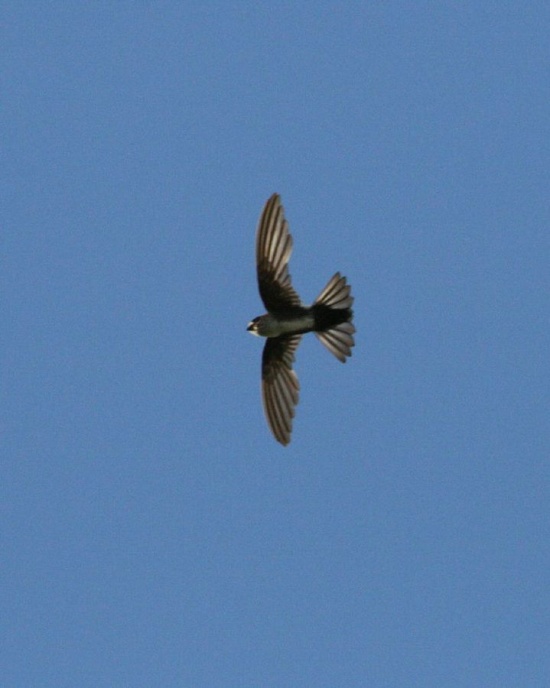- Tachornis phoenicobia
Identification
Mostly black upperside with white rump. Narrow white central underside between black flanks and with a thin dark breast band. Sides of head is dark grey-brown, not black. Immature has buffy instead of white underside. [1]
Distribution
Cuba, Isle of Pines, Jamaica and Hispaniola. Vagrant to Puerto Rico and accidental vagrant to Florida (1 record).
Taxonomy
Subspecies[1]
- T. p. iradii:
- Cuba and Isle of Pines
- T. p. phoenicobia:
- Jamaica, Hispaniola, Saona, Beata and Île-á-Vache
Habitat
Lowlands and low mountains.
Behaviour
Diet
The diet consists of insects which are caught at less than 20 m/65 ft above ground.
Breeding
Nesting is colonial, taking place in March/April, most often in palms or tobaco sheds[1].
Easily seen around inhabited areas breeding in any thatched roof buildings including roadside shelters. (P.Freestone)
References
- Raffaele et al. 1998. Birds of the West Indies. Christopher Helm, London. ISBN 0713649054
- Clements, JF. 2008. The Clements Checklist of Birds of the World. 6th ed., with updates to December 2008. Ithaca: Cornell Univ. Press. ISBN 978-0801445019.
- Freestone.P. 2005 Trip Report to Dominican Republic. Cornwall Birding Website. http://www.cornwall-birding.co.uk/trip-reports/dominican-republic-a-hotel-bird-report/
Recommended Citation
- BirdForum Opus contributors. (2024) Antillean Palm Swift. In: BirdForum, the forum for wild birds and birding. Retrieved 26 April 2024 from https://www.birdforum.net/opus/Antillean_Palm_Swift
External Links
GSearch checked for 2020 platform.




